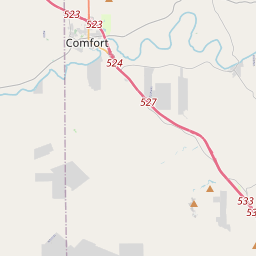Center Point United Methodist Church
Historical marker location:






In 1852, before there was a town here, Mrs. Henrietta Rees and her children came from Tennessee. Soon, she arranged for Methodist circuit riders to come to this area. One acre was bought for a church in 1872 from W. G. ("Gabe") Cocke and his wife Vanilla. About 1876 the Rev. W. E. Pafford and Turley Cocke built a church house. This site was purchased in 1883 from James Sellers. After a storm destroyed the first building under construction, a second was erected. This third structure was completed in 1911 by the men of the congregation. (1979)
As one of the most visible programs of the Texas Historical Commission (THC), historical markers commemorate diverse topics in Texas history, including: the history and architecture of houses, commercial and public buildings, religious congregations, and military sites; events that changed the course of local and state history; and individuals who have made lasting contributions to the state, community organizations, and businesses.
Texas is also home to the world's largest honky-tonk, Billy Bob's Texas in Fort Worth. The venue covers three acres and can hold up to 6,000 people.
In 1845, Texas became the 28th state of the United States, and Kerr County was officially formed in 1856. It was named after James Kerr, a major in the Texas Revolution and a member of the Republic of Texas Congress. The county's early economy was centered around agriculture, with ranching, farming, and timber production being the main industries.
During the Civil War, Kerr County, like many other parts of Texas, was divided in allegiance between the Union and the Confederacy. The area experienced occasional raids and skirmishes, but overall remained relatively peaceful during the conflict. After the war, the county began to recover and flourish economically, with the arrival of the railroad in 1887, which improved transportation and access to markets.
The 20th century brought further growth and development to Kerr County. The discovery of oil in the nearby counties stimulated the economy, and Kerrville, the county seat, became a regional hub for commerce and services. The establishment of Schreiner Institute, now Schreiner University, in 1923, brought higher education opportunities to the area. Today, Kerr County continues to attract residents and visitors with its natural beauty, historical landmarks, and vibrant community life.
Kerr County Timeline
This timeline provides a concise overview of the key events in the history of Kerr County, Texas.
- 1856 - Kerr County is officially established on January 26.
- 1857 - The first county government is organized in October.
- 1870 - The city of Kerrville is founded as a trade center for the surrounding area.
- 1876 - Kerrville becomes the county seat of Kerr County.
- 1888 - The San Antonio and Aransas Pass Railway reaches Kerrville, stimulating growth in the area.
- 1890 - Kerrville is incorporated as a city.
- 1930 - The Camp Meeting Association of the Methodist Episcopal Church South establishes a permanent site for summer encampments in Kerrville, which later becomes the Mo-Ranch conference center.
- 1962 - The Kerrville Folk Festival is first held, becoming one of the longest continuously running music festivals in the United States.
- 1998 - The Kerrville-Schreiner State Park is opened to the public.